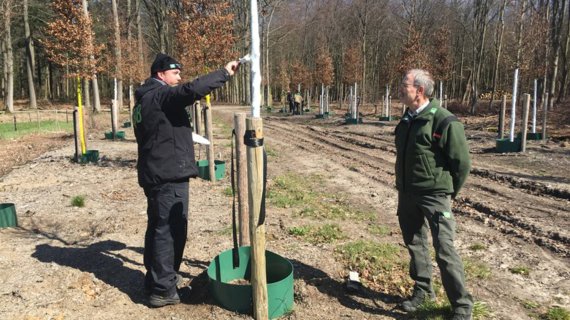Tekst: Nicole van ‘t Wout Hofland
Bart van der Sluis, a researcher at Open Teelten in Randwijk, has been studying methods of protecting trees from the sun. ‘Sunburn in trees has been a problem for 10 years,’ says Van der Sluis. ‘But it hardly happens anywhere except in tree nurseries and in urban areas.’
Damage
Trees with large root systems are especially sensitive to sunburn. They absorb water from the soil through their roots, and then it flows through their trunks, cooling them down. ‘The problem for nurseries is that trees get transplanted,’ explains Van der Sluis, ‘and it is impossible to transplant the whole root system.’ Sunburn in trees means damage to the bark and to the growth tissue. The tree needs growth tissue to form wood and bark. ‘Damage to the growth tissue affects the growth negatively because the tree invests a lot of energy in recovering from that damage,’ says Van der Sluis. During the recovery period, the tree is also more vulnerable to diseases and pests.
Sun cream doesn’t break and it can’t be vandalized
Bart van der Sluis, researcher at Open Teelten
Hessian, textiles and cream
That is the reason for protecting young, newly planted trees along an avenue. There are several materials available for this, including strips of hessian fabric, reed matting and textiles. The method used by the nature managers in Doetinchem works fine too, shows research by Van der Sluis. The white coating reflects the sunlight, keeping the tree cool. ‘Sun cream doesn’t break and can’t be vandalized.’ What is more, the coating slowly wears off, so the tree can gradually get used to the heat. Should nature managers soon be heading into the woods armed with sun cream? ‘Fortunately not,’ says Van der Sluis. ‘Because trees are close together in the woods, they create shade for each other.’

 Photo: Omroep Gelderland
Photo: Omroep Gelderland